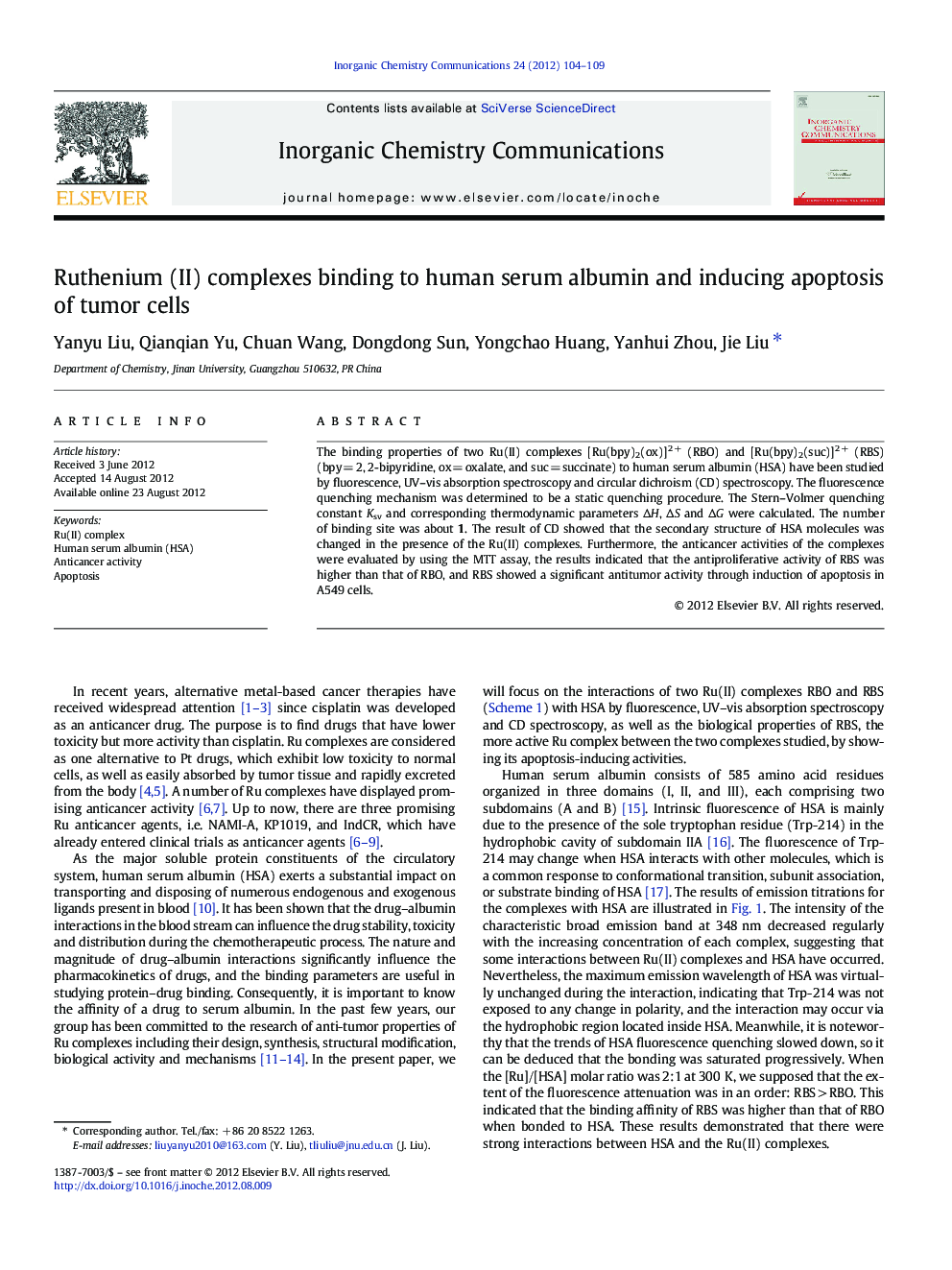| کد مقاله | کد نشریه | سال انتشار | مقاله انگلیسی | نسخه تمام متن |
|---|---|---|---|---|
| 1302322 | 1498966 | 2012 | 6 صفحه PDF | دانلود رایگان |

The binding properties of two Ru(II) complexes [Ru(bpy)2(ox)]2 + (RBO) and [Ru(bpy)2(suc)]2 + (RBS) (bpy = 2, 2-bipyridine, ox = oxalate, and suc = succinate) to human serum albumin (HSA) have been studied by fluorescence, UV–vis absorption spectroscopy and circular dichroism (CD) spectroscopy. The fluorescence quenching mechanism was determined to be a static quenching procedure. The Stern–Volmer quenching constant Ksv and corresponding thermodynamic parameters ΔH, ΔS and ΔG were calculated. The number of binding site was about 1. The result of CD showed that the secondary structure of HSA molecules was changed in the presence of the Ru(II) complexes. Furthermore, the anticancer activities of the complexes were evaluated by using the MTT assay, the results indicated that the antiproliferative activity of RBS was higher than that of RBO, and RBS showed a significant antitumor activity through induction of apoptosis in A549 cells.
The scheme is the illustration of the Ru(II) complex RBS binding to Human serum albumin (HSA) and its antitumor activity through induction of apoptosis in A549 cells.Figure optionsDownload as PowerPoint slideHighlights
► Two Ru(II) complexes have the capability of binding to human serum albumin.
► The mechanism of the bonding might be a static quenching.
► The binding forces are mainly hydrogen bond and Van der Waals force.
► Complex RBS showes apoptosis-inducing activities in A549 cells.
Journal: Inorganic Chemistry Communications - Volume 24, October 2012, Pages 104–109